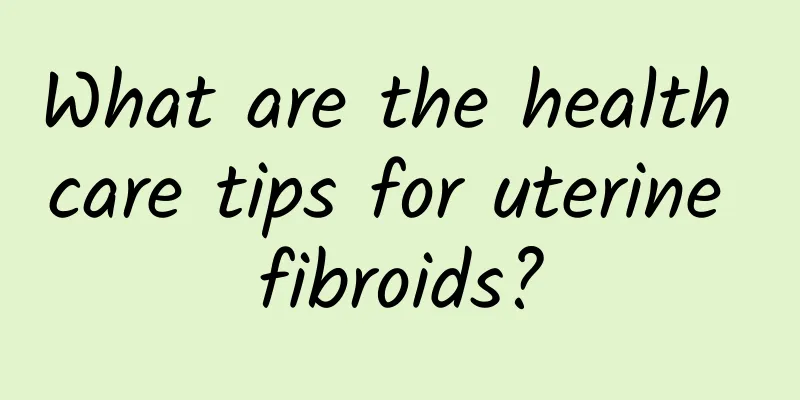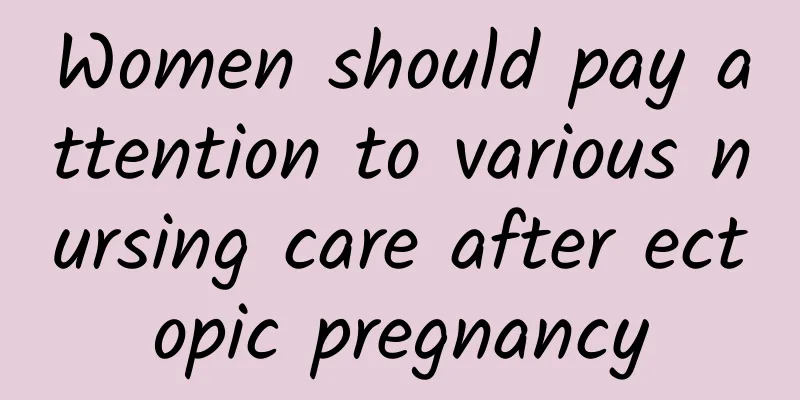What are the key points in diagnosing uterine fibroids?

|
Uterine fibroids are a common benign tumor in women. They are mostly formed by the proliferation of uterine smooth muscle tissue, and there is also a small amount of fibrous connective tissue. The cause of this disease is still unclear, but some people currently believe that it is mostly related to female hormones. Below we ask relevant experts to give a detailed introduction to the diagnostic points of uterine fibroids. What are the key points for diagnosing uterine fibroids? 1. B-ultrasound and laparoscopy are helpful for diagnosis. Treatment can be with drugs such as androgens such as methyltestosterone, antiestrogens such as tamoxifen, and luteinizing hormone-releasing hormone (LHRH) analogs. If the fibroid is larger than the size of a 2.5-month gestational uterus or the symptoms are obvious, resulting in secondary anemia, surgical treatments such as myomectomy and hysterectomy can be used. 2. Common signs are related to the size, location, number and degeneration of the fibroids. When the fibroids are large, hard, irregular and nodular masses can be felt in the abdomen; during gynecological examination, the uterus with intramural fibroids often enlarges, has an irregular surface, and has single and multiple nodular protrusions. Subserosal fibroids can be felt as hard, spherical masses connected to the uterus with a thin pedicle and are movable; the uterus with submucosal fibroids is mostly uniformly enlarged, sometimes with dilated cervical openings, and the fibroids are located at the cervical opening and prolapsed in the vagina, and are red, solid, and have a smooth surface; if infected, the surface is covered with exudate and ulcers are formed, and the discharge has a foul odor. 3. The symptoms of uterine fibroids are mostly manifested as heavy menstrual flow, prolonged menstruation or not necessarily a significant increase in menstrual flow, or normal menstrual days and flow but shortened cycle; abdominal mass; increased leucorrhea; low back pain, lower abdominal distension, abdominal pain; compression symptoms such as frequent urination, urination disorder, urine retention; infertility and secondary anemia. Acute abdominal pain may occur when subserosal pedunculated fibroids are twisted. Intramural fibroids may cause or aggravate dysmenorrhea. Large uterine fibroids may compress surrounding organs and tissues to produce dull pain and a feeling of heaviness. The above content introduces the key points of uterine fibroids diagnosis in detail. I believe you have understood it after reading the above content. If you have other questions, please consult our online experts, who will answer you more professionally. Uterine fibroids topic: http://www..com.cn/fuke/zgjl/ |
<<: Experts tell you the causes of uterine fibroids!
>>: Are uterine fibroids around you? Experts will introduce it to you!
Recommend
What kind of exercise is suitable for patients with ectopic pregnancy?
What kind of exercise is suitable for patients wi...
Taipei City's random inspection of clenbuterol found no excessive levels
The Taipei City Health Bureau announced that in S...
What to do with acute pelvic inflammatory disease?
What to do with acute pelvic inflammatory disease...
Let's take a look at the classification of women's menstrual disorders
There are different types of irregular menstruati...
How should patients with thick endometrium pay attention to their diet?
Patients with endometrial thickening should avoid...
Should I remove my ovaries for an ectopic pregnancy?
Whether ectopic pregnancy requires ovarian remova...
Will having cervical warts affect life expectancy?
In life, I believe everyone has had such an exper...
Is drug treatment good for chronic cervicitis in women? 3 most effective treatments for chronic cervicitis
There are many ways to treat chronic cervicitis. ...
The most common precautions after abortion
Abortion refers to artificial abortion. Most wome...
What are the health effects of ractopamine? Su Yifeng is here to answer...
Recently, President Tsai Ing-wen held a press con...
What are the causes of cervicitis?
Generally speaking, cervicitis is not very scary....
How to treat uterine fibroids How to treat uterine fibroids
Uterine fibroids are the most common type of tumo...
What should you pay attention to after negative pressure aspiration?
Vacuum aspiration refers to the use of a suction ...
What are the dangers of thick endometrium?
What harm does thick endometrium bring? The disea...
Can I get pregnant if I have irregular menstruation and polycystic ovary syndrome?
Irregular menstruation and polycystic ovary syndr...









